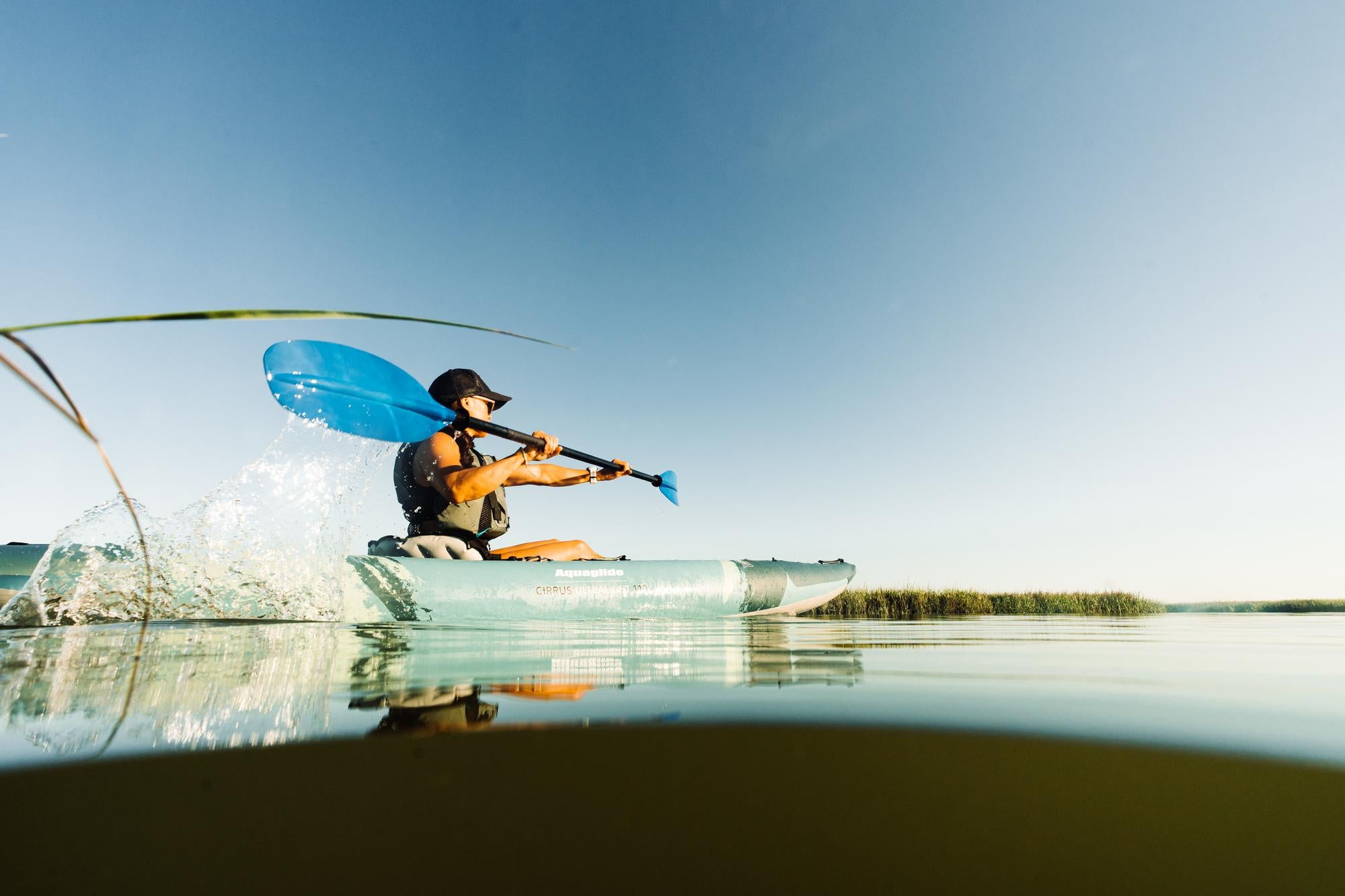Self-Guided Paddle Tour: Waterfowl Identification
Perhaps the most common wildlife you’ll chance to encounter while paddling are our winged friends. From saltwater to brackish and fresh, birds inhabit all your favorite waterways. Here’s a quick rundown on how to identify and find some common avian neighbors this paddle season!
Western and Eastern Osprey
Found on all continents except Antarctica.
Nick-named the sea hawk, river hawk, fish hawk and my favorite, white belly, osprey are large raptors which can live in close proximity to cities and tolerate a range of environments. Look for osprey in upright snags near the water's edge. A quiet fisherman, it isn’t uncommon to hear a splash and then notice an osprey emerging from the water with a fish in hand (or talons rather). Osprey will grip fish in parallel alignment to their torso and flight direction. Owls and osprey are the only raptors whose outer toe is reversible which allows opposable grasp of prey (especially useful with slippery fish). Another useful adaptation is their closeable flaring nostrils - to keep water out when diving for fish.
Great Blue Heron
Found on North America and Central America, as well as the Caribbean and the Galápagos Islands.
Colloquially known as a pterodactyl to adoring rafters, the great blue heron is often found wading near the shores of open water and in wetlands. Though males are slightly smaller than females, they are otherwise an exact mirror of each other. Blue grey bodies with neck floof and a darker stipe or mask across their eye which extends into a dramatic feathered eyebrow. They are a hardy bird and will remain through winter months as long as there is unfrozen free flowing water in their stream, creek or river of choice. Inhabiting saltwater marshes, mangrove swamps, flooded meadows, lake edges, or shorelines, they are quite adaptable. When not in the shallows spear fishing with their long narrow beaks, they are nesting in bushes, trees and preferably, on islands.

American Dipper
Found on the Western Coast of North America.
Also known as the Ouzel, the American Dipper is North America's only truly aquatic songbird. These chunky gray/brown birds are identifiable by their namesake behavior of "dipping" - as they perch on the shoreline or on rocks, they bounce up and down. They are also identifiable by their white eyelids, which makes it look like their eyes are flashing as they blink. Dippers are always found near fast moving streams, and almost always favor cold water and mountainous environments. They are telltale signs of a good water quality, and as water quality decreases, so does their habitat.
Lesser Sandhill Crane
Found on North American and extreme northeastern Siberia.
The lesser sandhill crane is named for one of its habitats: the Platte River, on the edge of Nebraska's Sandhills in the Great Plains. Both sexes look alike. Red foreheads, white cheeks, and long, dark, pointed bills for adults. Reddish-brown upper parts and gray bloomers for immature birds. Standing two and a half feet tall with a wing span of nearly 79 inches, they trail long dark legs and elegant outstretched necks in flight, resembling an arrow. Laying one brood per year between December and August, the lesser sandhill crane, when not in flight, can be found in the reeds at a river or lake’s edge nesting and fishing. When in their vicinity, listen for their frequent and loud, trumpeting call. Standing close together in synchronized time, mated pairs will unison call in a complex duet.

Common Merganser
Found in Europe, Asia, and North America.
Boasting one of the best crests on the water, this large sea duck can be found on rivers, lakes and sometimes salt water in forested areas. Breeding plumage on adult males is easily distinguished, the body white with a variable salmon-pink tinge (more robust with a crustacean rich diet), the head black with an iridescent green gloss and the rump and tail grey. Non-breeding plumage from July to October is largely grey, with a reddish-brown head for both sexes. Though the common merganser catch and eat fish with their serrated bills ( affectionately nick-named sawbill), they also dine on mollusks, crustaceans, worms, insect larvae and amphibians. More rarely, they enjoy small mammals and birds. If not diving incessantly for food, mergansers are un-shy about entering rapids, and are usually seen swimming on the water surface, resting on rocks in midstream, hidden among riverbank vegetation or nesting in holes in trees.

Pelican
Found on all continents except Antarctica.
Pelicans are characterized by a long beak and a large throat pouch used for catching prey and draining water from the scooped-up contents before swallowing. They have predominantly pale plumage, except in breeding season when bills, pouches, and bare facial skin become brightly colored. Pelicans frequent inland and coastal waters, where they feed largely on fish, catching them at or near the water surface. They are gregarious birds, travelling in flocks, hunting cooperatively, breeding colonially, and tending to nest on the ground or in trees. To remain buoyant, they possess air pockets throughout their bodies including in their bones and to stay dry, pelicans secrete oil from their preen gland which they then coat over their feathers.





